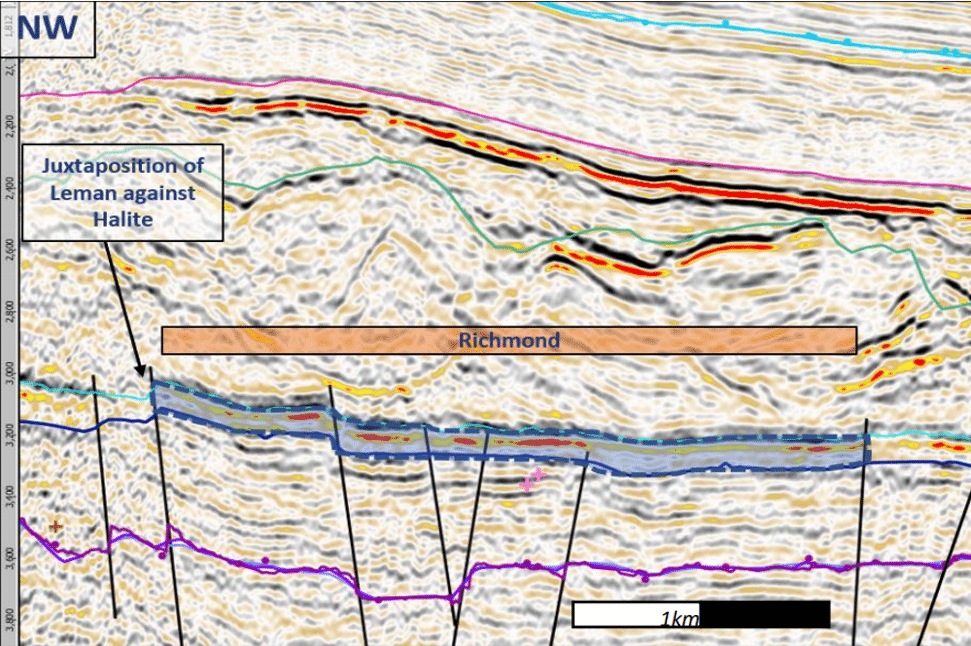Where exploration in the Southern North Sea was traditionally focused along the southern shores of the Permian Silverpit lake, the (re)discovery of Cygnus and the interest in Lower Carboniferous and Zechstein plays in the same area along the northern margin of the Southern North Sea have now sparked a revival of activity in this area.
Careful mapping of sediment source
As was presented yesterday, Deltic Energy has carefully mapped the northern margin of the Silverpit basin (pink area in map below) in an attempt to find Rotliegend prospects similar to the setting as found in Cygnus.
In contrast to the southern margin of the Silverpit lake, Rotliegend sands are probably more scattered in this area and it really is a matter of finding the areas where sands were shed into the basin from areas further north.
Key in the identification of Rotliegend prospectivity is the study of nearby wells, which in some cases had wrongly assigned Permian sands to Carboniferous reservoirs.
The number of wells penetrating the Permian is however much smaller than further south, with quite many terminating in the Triassic. This is a reflection of the fact that prospectivity was proven in the nearby Forbes and Esmond fields, so at the time of discovery there was no desire to drill deeper than that.

P2428
Deltic Energy has now found an area that is thought to be prospective in the Rotliegend. The so-called Richmond closure sits in licence P2428, which was awarded as Innovate licence P2428 in 2018 during the 30th Round.
The mapped structure is a large 3-way dip closure, on top of a Carboniferous High. To the northwest, the structure relies on fault closure, but with the Rotliegend likely to be juxtaposed against Zechstein evaporites there is a good chance of fault sealing to work.
The thickness of the Rotliegend is expected to be around 90 m in the area of the prospect, and expected P50 in place volumes are 429 BCF.
Carboniferous and Zechstein prospectivity
In addition to Rotliegend reservoirs, Deltaic has also identified prospectivity in the overlying Zechstein Hauptdolomit (Plymouth, P50 481 BCF in place) and underlying Carboniferous (Cupertino, P50 696 BCF in place).
HENK KOMBRINK




